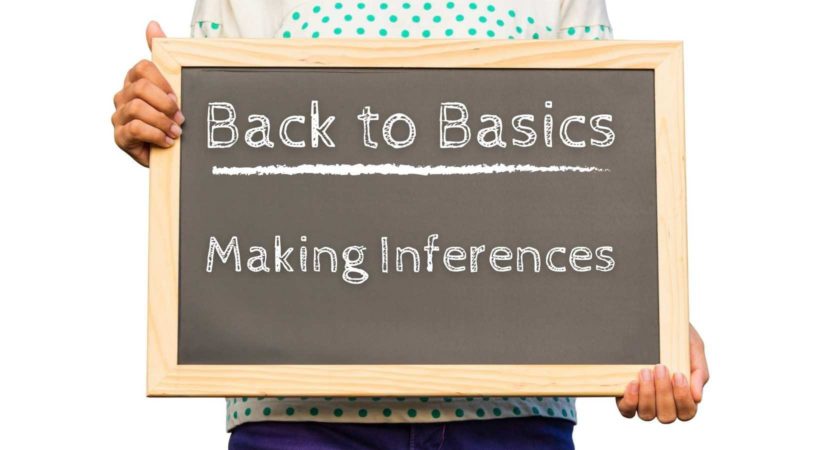
Back to Basics: Making Inferences
Welcome to our Back to Basics series! In this series we explore some of the foundational methods, practices and terminology for teaching reading. This series is for those new to the field of literacy, beginning tutors or those who would just like a refresher. This week we are discussing the reading comprehension strategy of making inferences.
A note to readers: This is the last post of 2021! We are taking a break for the holidays, but check back here for another Back to Basics post on January 4th, 2022.
Making inferences means drawing conclusions based on the information provided, or “reading between the lines.” Readers relate what the author says to our existing knowledge and come to a conclusion about the author’s unstated message. This strategy often works hand in hand with making predictions as both are reading comprehension strategies. Inference is about helping learners understand information that is implied rather than explicitly said. Essentially, an inference is an educated guess based on two factors: evidence presented in the text and our background knowledge and experience. Readers look for textual evidence to support their inferences. However, we can infer information using images and audio as well.
Our friends at the Partners in Reading program from San Jose Public library offer a great example of teaching inference to an adult learner:
As shown in the video, it is helpful to encourage learners to make inferences by asking appropriate questions. Tutors can also support learners by using the think aloud method while they read. Tutors can ask themselves questions and demonstrate the inferences they make as they read.
Some learners will experience difficulties with making inferences. This can be due to a number of factors, such as not having background knowledge on the topic, not being used to inferential thinking, or the text does not have enough information to allow for inference. The resources below offer help with teaching inference to literacy learners to encourage this essential comprehension and engagement skill.
Resources
- The Inference Collection – Once Upon a Picture (adaptable for adults)
- Inference Making: The Key to Advanced Reading Development
- Inferences and Conclusions : Reading Between the Lines
- Journeyworkers: approaches to literacy education with adults (unit 4, part A).
- Reading power : teaching students to think while they read
- What is an inference? And how to teach it
Related Blog Posts
The Westcoast Reader – January 2021
The January issue of The Westcoast Reader is available now! Read about the BC Recovery benefit, Family Literacy Week, and more.
Literacy and the Law
The legal system is complex and confusing. Learn more about making the law more accessible.
Back to Basics: Word Attack Strategies
All readers encounter words they don’t recognize. Word attack strategies help learners decode, pronounce and understand unfamiliar words.
